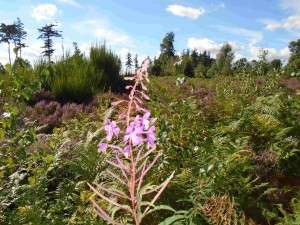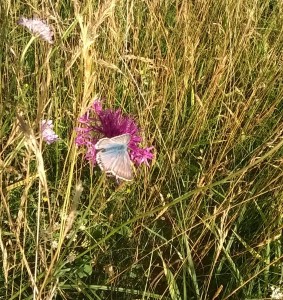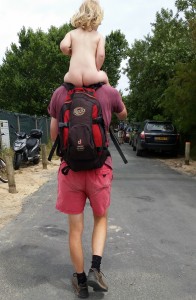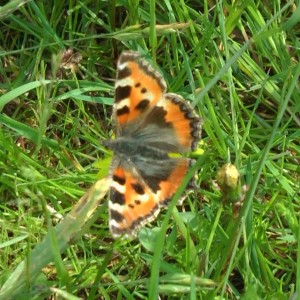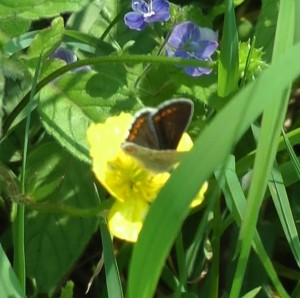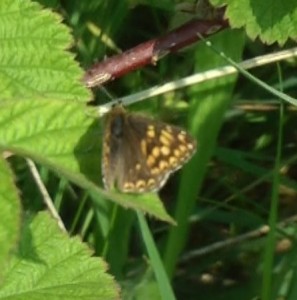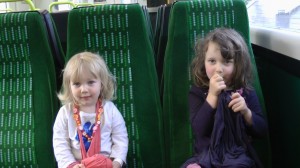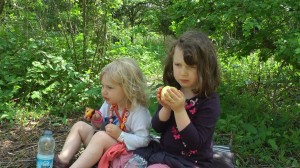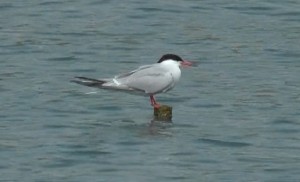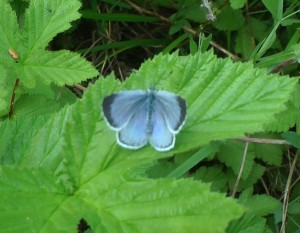Recently a friend lent me GUT – the inside story of our body’s most under-rated organ by Giulia Enders. It’s rather good. The hook is that it’s a light-hearted tale of the gut, bacteria, and excrement, written by a young and fresh PhD student whose photo occupies much of the front cover. Her prose – or at least the writing of the person who translated from German to English – is straightforward and upbeat. It’s an easy read – just right for me. So let me tell you what I learned…
Toilet procedure. Apparently, studies have shown that you get more satisfaction by squatting to defecate rather than by sitting on a toilet in the usual way. Your rectum opens up properly when you squat; there’s a kink when you sit on the toilet. Haemorrhoids, constipation, and various other bum related problems are common only in countries where people use the usual toilets. Key message here: don’t strain! Enders points out that you can squat on a toilet by using a stool and bending forward.
Saliva. Saliva contains painkillers and benign bacteria for protecting our teeth and help us digest food. We produce one to two litres per day. But not at night though. So we have bad breath in the morning – less desirable bacteria are free to grow without saliva. That’s why brushing our teeth before bed and when we wake up may be a good idea.
Appendix. There is a well-written, brief description of the parts of the gut and their functions. The small intestine absorbs nutrients from food. The large intestine does the same, but in a different, more leisurely way. It contains numerous helpful bacteria to break down food and absorb minerals and nutrients from the food such as calcium and various fats. The appendix comprises immune cells. It disposes of unhelpful germs that may be mixed in with the bacteria. So the appendix is particularly useful for people in places that are rich in dangerous microbes (certain hot countries).
Fat. Fat can contain twice as much energy per gram as carbohydrate or protein.
Coeliac disease, gluten intolerance and lactose intolerance. Coeliac disease is a condition whereby consuming gluten damages the villi that line the gut wall, inhibiting our ability to take in nutrients. Gluten intolerance doesn’t seem to be properly understood – gluten doesn’t cause damage, but it gives sufferers headaches, fatigue, flatulence, or some other condition. Lactose intolerance isn’t really an intolerance is the bodies inability to fully break down the sugars in milk. The undigested lactose makes its way to the large intestine, where it feeds bacteria causing stomach aches and flatulence. Apparently, in 75% of the world’s population, the ability to digest lactose decreases with age. (Reasonable: as babies we need our mothers’ milk, but not later in life.) So less lactose may help our bodies function.
Enders also writes about fructose malabsorption: basically, the circumstance whereby we eat so much fruit that our bodies can’t digest it, which has various negative consequences. Particular problem these days with added sugars and exotic fruits from across the world. Message: don’t go overboard with fruit.
Faeces. Some nice hand-drawn pictures! You should be aiming for, as she describes it, “like a sausage or snake, smooth and soft”. Also, a good sign if it floats rather than sinks rapidly (sinking indicates undigested nutrients). Important to make sure you drink enough too, to avoid hard faeces. Be grateful I don’t use instagram.
Sea squirt. Interesting sea creature this: it roams about in the ocean until it finds a secure rock, and then once settled it eats its own brain. This begins an interesting chapter on the gut and the brain. How problems with the gut, such as irritable-bowel syndrome, can affect our mood, causing depression and anxiety. Conversely, problems with the brain, notably stress, can affect our ability to digest nutrients. Message here: try to make mealtimes relaxing.
The connection between gut and brain is not understood properly.
Bacteria. We are covered in and contain trillions of the them, and exactly what they all are, and what they all do, is an active area of fascinating research. Each person has a different set of bacteria, although many bacteria are common. A large proportion of our bacteria live in the gut, in the large intestine and rectum, in particular. Exactly how your body functions, how able it is to digest a certain vitamin, for example, depends on the bacteria your gut contains – your “gut flora”.
Babies in the womb have no bacteria, but as soon as they are born they are quickly exposed to very many – beneficial ones from mother (vagina, skin, milk), and probably some harmful ones hanging around from the house or hospital.
Cows. Cows consume grass, bacteria in the cows then use the consumed grass to reproduce, and then they themselves are digested by the cow as a source of protein.
In total we receive 90% of our nutrition from food, and 10% from our internal bacteria.
Yoghurt. This is milk which has been pre-digested by bacteria. We eat the bacteria. How healthy the yoghurt is depends on the bacteria used. It’s easier to digest than milk because much of the lactose has already been broken down into lactic acid and small sugar molecules (making it sour and sweet).
Bacteria are used in other foods too, such as sauerkraut, which is more nutritious than cabbage.
Cholesetrol. There are many fascinating experiments involving bacteria reported in the book. One is about an examination of Maasai warriors some years ago. Their diet consisting almost exclusively of meat and milk, yet they didn’t have high cholesetrol. The answer was that the warriors often ate curdled milk, and this gave them a regular supply of gut bacteria capable of processing the cholesterol, absorbing it, or modifying it, to give the warriors a regular level of cholesterol.
Salmonellae. These bacteria are part of the gut flora of reptiles and tortoises. By excreting, the salmonellae end up in grains (usually grown in Africa) that are then exported to Europe for chicken feed. Chicken lays an egg, and the salmonellae from chicken’s bum ends up on the egg. Salmonellae and other bacteria don’t mind being frozen, they live on, but they are killed by high temperatures. So cooking a chicken or egg gets rid of the bacteria, but rubbing it around on our work surfaces can spread salmonellae – enough of it will make us sick. The author recommends (i) use a plastic chopping board (fewer grooves for bacteria to gather in), (ii) wash anything that comes into contact with meat or raw eggs thoroughly, (iii) cook properly. She also mentions the advantages of buying organic (less reptile shit).
Toxoplasmata. Interesting bacteria, this one. They live in cat guts, but transport themselves from one cat to another via humans. Apparently our percentage chance of being infected is about the same as our age. They are parasites – they live in us but give us nothing in return. In fact, they can harm us; it is suspected that they are the cause of strange behaviour in us, recklessness, depression. Studies of car crash victims found, overall, high levels of toxoplasmata.
Worms. Threadworms multiply like this. If one is inside us, then when we sleep, she wriggles down to our anus and lays some eggs. She wriggles around a bit so that we scratch. We get then eggs on our hand and later when we scratch our nose or lick our fingers they end up in our mouth. Then down the gut to the small intestine where the eggs hatch.
Hygiene. To quote, “the higher the hygiene standards in a country, the higher that nation’s incidence of allergies and autoimmune diseases”. Don’t disinfect! You can limit bacteria sensibly by (i) diluting (washing fruit, say), (ii) drying (think lentils, say), (iii) keeping food at appropriate temperatures. Enders warns that kitchen cloths, and to a lesser extent towels, are typically covered in bacteria. We spread bacteria with them; they don’t really clean things.
Antibiotics. Using these is like dropping a nuclear bomb on bacteria – it wipes loads of them out, good and bad. They have no effect on viruses, which are infections of cells (so are wasted on colds). Better to avoid taking them as they wipe out important gut flora. Enders mentions the importance of buying organic meat, because the organic industry places stricter controls on the use of antibiotics for animals (antiobiotic use in animals can be wasteful – builds up resistant bacteria). She also mentions washing fruit and veg thoroughly in case they have traces of antibiotics on them.
Probiotics. Foods are left, or treated in some way, so that bacteria grow on them in a process called fermentation. The fermented food is preserved – resistant to bad bacteria – because of the acidity of the product (generated by the beneficial bacteria) and the beneficial bacteria themselves. Unfortunately, the range of bacteria in fermented products is much reduced these days (because of industrial processes, economy). Food with beneficial bacteria in is called probiotic. Particularly useful to take probiotic foods or medicines after a dose of antibiotics – our gut bacteria need replenishing!
Prebiotics. These are foods that encourage bacteria in us to grow. The good bacteria must already be in the gut, then we feed them to make them multiply. High dietary fibre foods good for this (vegetables, fruits, wholegrain). Her final message is: make sure we feed the good bacteria in us (with a healthy diet)!
